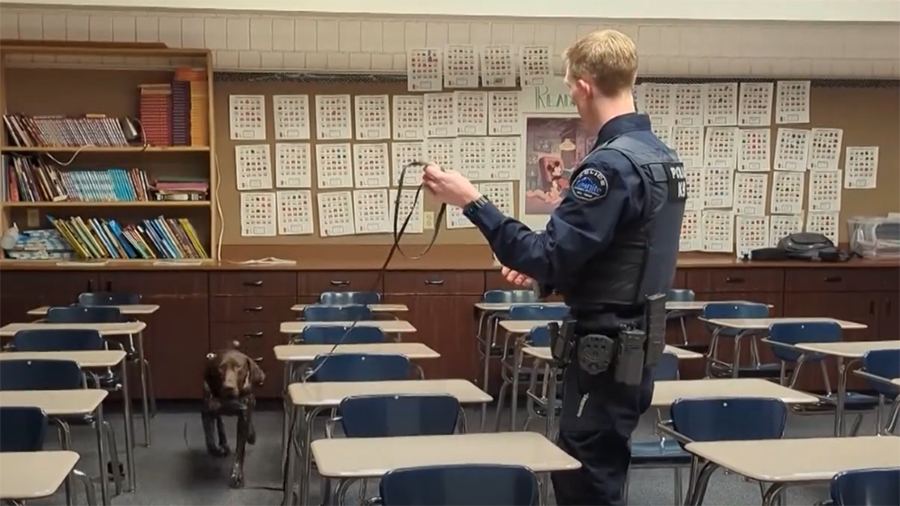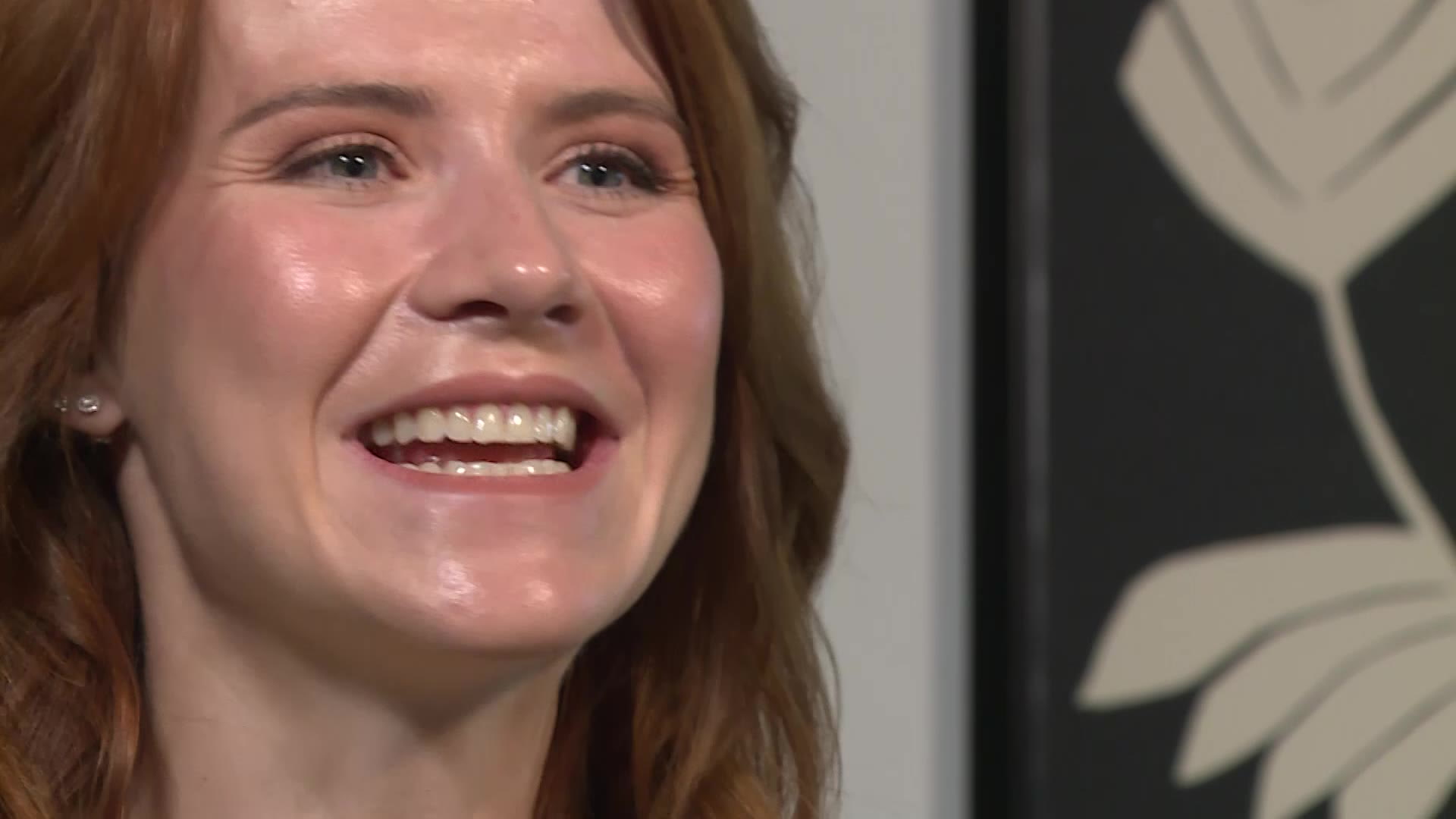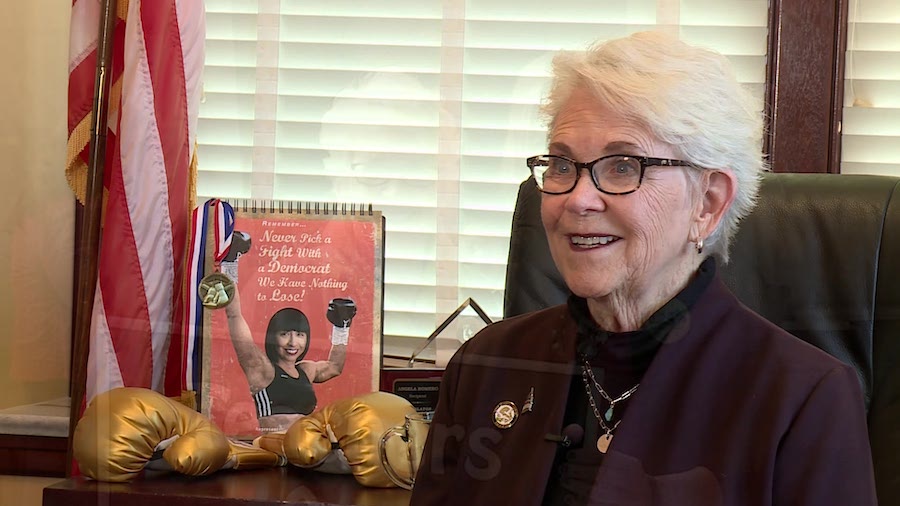KSL+: University Health Pharmacy Director Explains Pause To J&J Vaccine
Apr 15, 2021, 7:00 PM | Updated: Jun 3, 2021, 4:03 pm
Editor’s note: Conversation is lightly edited for clarity and readability.
SALT LAKE CITY, Utah – We’re looking at the timeout on the Johnson and Johnson vaccine. If you missed the headlines this week, the FDA and CDC have called for a pause on the Johnson and Johnson shot. Six women between the ages of 18 and 48 developed very rare blood clots in the brain. That’s six people out of nearly 7 million who have received the one dose vaccine in the US. The symptoms are similar to stroke symptoms. For these women, the symptoms showed up 6 to 13 days after getting the shot. According to Johns Hopkins University, these types of blood clots happened to five in every 1 million people each year. These types of clots are treatable, but are more difficult to treat than clots in the veins and legs or lungs. And the FDA understandably, wants to know more.
Here to talk about this and to go beyond the headlines is Dr. Kavish Choudhary. He is the pharmacy director at the University of Utah Health, where he has been handling vaccine distribution.
Matt Rascon: Let’s start with your reaction, as a medical professional. What did you think about the news that Johnson and Johnson, one of the three authorized vaccines in the US, would be put on hold?
Dr. Kavish Choudhary: It was a bit surprising me but it’s to be expected, when you have an emergency use authorization often times you’re just pushing to get something to market to just treat the masses. And the follow up studies from the FDA or the follow up data that’s required, may indicate that we need to pause. And this is really one of those cases where we’re pausing. And I think the FDA, CDC are acting appropriately saying let’s pause over here, let’s assess to see what really is happening, is there really a safety concern. And, you know, our best bet is to just pause for the moment and see if it’s really impacting a certain population, or if it’s truly going to impact the masses.
Matt Rascon: The news has sparked some concerns, as I’m sure you’ve heard, for reaching certain populations who benefit from a one dose vaccine like the homeless and people who live in more remote areas, correct?
Dr. Kavish Choudhary: Yeah, it has put a pause on some of the vaccine campaigns. We’ve been primarily, at the university, a Pfizer site. So most of our patients have received two vaccines. But this does, slightly impact our ability to roll out vaccine. The Johnson and Johnson has been a very small percentage of our overall vaccine rollout. But yes, that’s a secondary concern. serious concern about the more rural populations or the homeless population, or too hard to get to populations are hard to reach populations.
Matt Rascon: It sounds like the production problems from last week may have actually been beneficial, not receiving as many doses as we expected.
Dr. Kavish Choudhary: Yeah, I was talking to my colleagues, I think for the first time in the history of my career, a massive supply chain disruption, had a positive impact in patient care for the moment. So we are fortunate that at least it’s less patients who reschedule at the moment and less patients that transition to an alternative product.
Matt Rascon: Certainly vaccine hesitancy is already an issue that we’re seeing, and this isn’t going to help. Yet we have to balance that with safety concerns. There’s also been concerns as we’re talking about this, that this pause could impact just the public’s trust of a vaccine to stop the spread of COVID. What are you hearing? And what would you what would your message be on that front?
Dr. Kavish Choudhary: Yeah, and that is obviously a concern. I think as the vaccines all came up so quickly, again, to think about these vaccines came to the UAE or emergencies authorization in under a year. A lot of folks had concerns about that, you know, my overall message that please get vaccinated as quickly as possible. That’s our only way of really getting back to normal, whatever the new normal may be. But I think with the vaccines, the cause for concern right now does heighten awareness that we’re still dealing with a very new product. But overall, the products itself the vaccines and Moderna vaccine, the Pfizer vaccine. I mean, for the most part, the Johnson and Johnson vaccine has been proven to be safe and efficacious and really our recommendations to get the vaccine as quickly as possible.
Matt Rascon: Can you help us understand the process here? I think just some more background info might people understand you know, why this was put on pause. So what is the trial process for drugs and medications Where in that process are we now with Johnson and Johnson? And you know, why would they make this decision?
Dr. Kavish Choudhary: So there’s two different paths I’ll talk about here. One is the overall drug trial process or vaccine trial process. There’s four specific phases. And then, with the COVID vaccine, there’s actually the EUA process and emergency use authorization process. And that’s what we’re in right now. The EUA process does take in consideration the four phases of drug trials or vaccine trials, it just expedites. Overall, the first trial phase, is preliminary testing to make sure that they are safe. At this point, you’re just getting initially into human volunteers These trials are less than 100 people. And you sort of find out whether overall, it’s safe, and you’re not going to have any major severe reactions.
The second phase that we get you a little larger pool of people. So phase two, is looking at assessing side effects, and just the overall how people are reacting to medication. At this point in time, we’re not assuming the medication itself is efficacious, we’re actually just determining if it continues to be safe, what the side effect profile is.
Then phase three, is where you’re trying to really dial in that dose of the medication or the vaccine. They figure surely what’s going to be marketed to the mass public. So really, this is where, looking at the EUA process we have with the COVID vaccine. What happened with this is the Phase one, two and three happened very quickly. And all within less than a year, when typically this process takes multiple years. And then it got to market or to the emergency use authorization. But in a normal cycle, a product would go through Phase One, and two and three, and then go to the FDA for review and approval. Again, like I mentioned before, they’ll take about six to eight years or multiple years to get the drug approved itself.
And then you go into phase four. Phase four is what they call the post marketing analysis. And this is where I would say that with our vaccine trials, this is where we are right now. Well, not truly there, because it’s not a we’re not really in true phases of the trials, but we’re probably in that phase right now, where we are looking at the scientific profile, and trying to dial in patient populations to the vaccine or medications should be targeted for. So typically, in the phase four trials is where you start seeing maybe some different age parameters pop up or targeted populations and medication or vaccine should be used.
Matt Rascon: Okay, and then what exactly is the FDA watching out for in safety monitoring? And how long does that part of the process last?
Dr. Kavish Choudhary: So in general, phase four, so I’ll just speak in more general terms here, it can happen go over four years. So think about Vioxx. It’s a anti-inflammatory medication that came out years ago. It was studied for five years and then also pulled from the market, because they found that it had some issues with folks with heart disease and heart attacks. So it varies. It’s a lengthier question, the time is variable. But what the FDA is looking for is based on the report. So there actually is a vaccine reporting system that we do report our adverse events within. I think you saw with the Johnson and Johnson vaccine, six patient reactions out of over 6 million doses with these are all reported at the federal level today, both the CDC and the FDA, and they’re reviewed. So looking for other trends, are there certain patient populations to be concerned about? Are there commonalities? Are there medication contraindications, you need to be concerned about that going forward? So we’re looking at all the data that may be out there that may help us predict who this vaccine or medication may be contraindicated in.
Matt Rascon: Okay, as a medical provider, how do you help providers and patients weigh the risks that are just inherent to every medical decision?
Dr. Kavish Choudhary: That’s a great question and say, talking about COVID, the risk of getting COVID is much worse than the risk of getting the vaccine. The vaccines again, have been proven time and again and again, for the most of the general population, to be safe and effective. And we will strongly encourage folks to get the vaccine as quickly as they possibly can. And the best vaccine is a vaccine that’s closest to you. I understand it’s a personal choice. And again, I would recommend if you want to try to get back to normal as soon as possible, a vaccine does help that we are in this for the long haul. So we are going to continue to socially distance and wear masks. The vaccine can kind of help us to be allowed to be closer to those we want to be around.
Matt Rascon: I think on the surface of this this story. It’s easy to see, at least for me why the pause here might add to the hesitancy. A lot of people have the trust issues with the vaccine. But is there something to be said of the fact that the FDA is investigating and not trying to hide these side effects, however, rare they might be from the public?
Dr. Kavish Choudhary: I think it’s the FDA doing a great job because they want to be transparent about this. They recognize that this vaccine is all public scrutiny. And they recognize the public trust is in them to do their job. And I appreciate that they are taking this very seriously. I don’t think it’s an overreaction. I think it’s appropriate reaction to how they requested a pause and allows us to do time to kind of figure out exactly is this really a bigger issue? Or is it an issue for a targeted population?
Matt Rascon: Obviously, COVID was a unique situation. But is there something to the argument that we just did this too fast?
Dr. Kavish Choudhary: That’s a great question. I. I don’t think we did too fast. I’ve working on clinical trials for quite some time, it was remarkable how fast we got this done. But I think the reason why we got it done so fast, is that all the focus and all the energy went to this. So in essence, three years worth of work was done in a year, because everything else was dropped to focus on it. So I still think the same amount of time and energy went into it just was all very, very focused and gets got done in a shorter amount of time. So I don’t think it takes away from the work that was done. Still, the same amount of work that went into any other vaccine that would go in over a normal course of time was, was done in his implementation or his approval.
Matt Rascon: Even if this does make people think twice about the Johnson and Johnson vaccine, I think it’s important to note that it is different from the other two approved vaccines in the U.S.–Pfizer and Moderna. So side effects with one shouldn’t be confused with the others.
Dr. Kavish Choudhary: Yeah. So the Madonna and the Pfizer vaccine, are an mRNA vaccine, while the Johnson Johnson and the AstraZeneca vaccine are very similar that they are based off of an adenovirus. So again, different they’re there to stimulate different types of reactions in the body. But again, all four vaccines are there to try to protect the person from the overall virus.
Matt Rascon: Is there anything else that you think would be important for people to know when it comes to this pause on Johnson and Johnson?
Dr. Kavish Choudhary: While there’s a pause on Johnson and Johnson, there’s still other two other vaccines widely available across Utah and I would strongly encourage those who have not received the vaccine to get the vaccine, their appointment with your local health department, a number of the healthcare providers in the state of Utah, a number of pharmacies are all providing vaccines, please call them get your appointment schedule, get the vaccine as soon as possible. Vaccines are free of charge, and again, is the fastest way you can get back to being normal.
Matt Rascon: In Utah, more than 1.8 million doses of Pfizer and Moderna have been administered, compared to fewer than 80,000 people who have received the Johnson and Johnson vaccine. The Health Department says there are around 50,000 unused doses of it left in the state of course, currently on hold. Now if you got the J&J shot in the last three weeks, the CDC says out of an abundance of caution, you want to look out for severe headache, abdominal pain, or leg pain. If you have those, you’ll want to get checked out.













